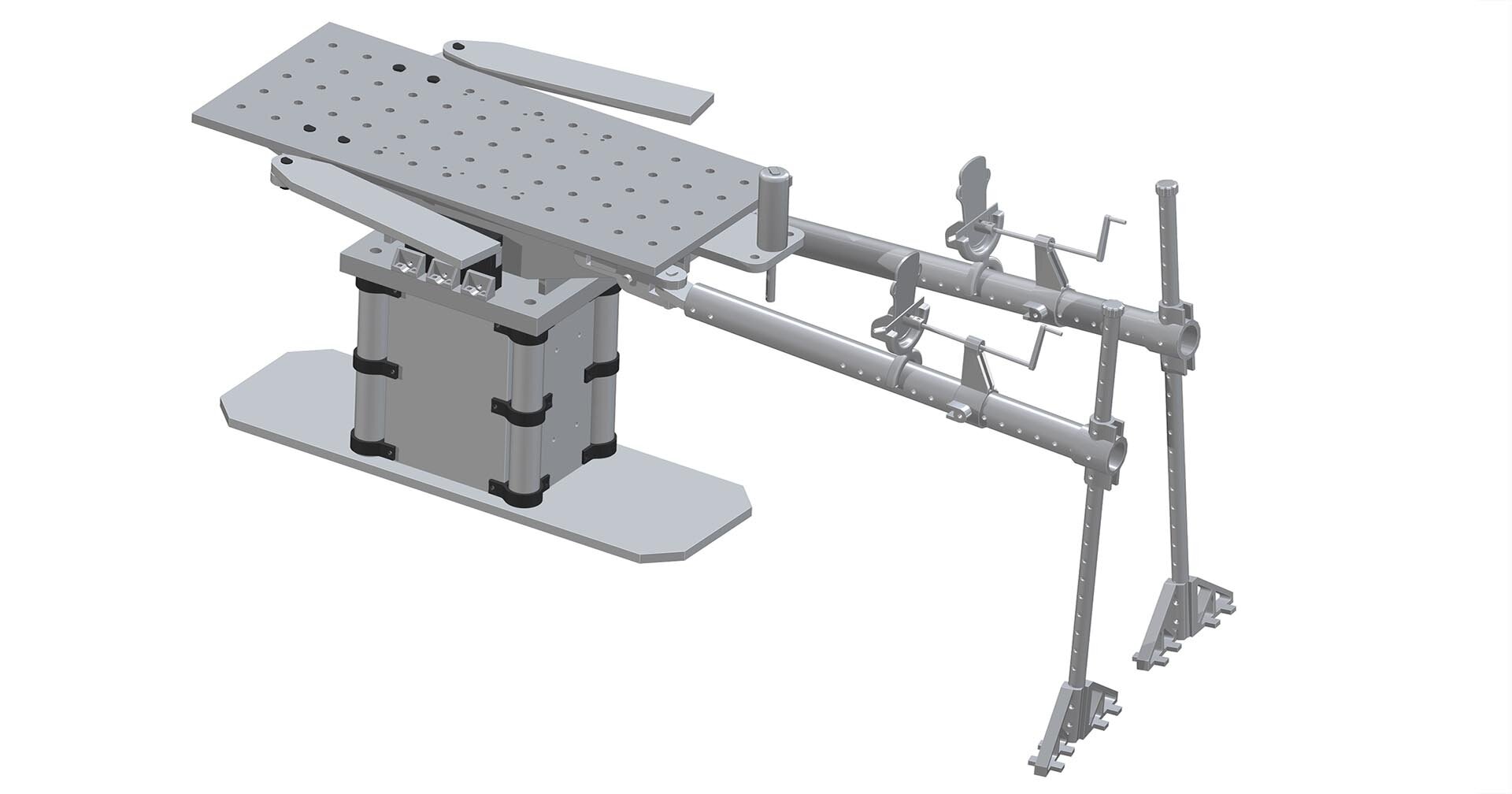Open-Source Tech Enables 3D-Printed Surgical Table.
A collaborative project between Western Engineering and Michigan Tech University was successful in building a 3D-printed, functional surgical fracture table at a fraction of what it would normally cost.
Their work was published in the high-impact journal PLOS ONE, outlining innovative, step-by-step, techniques to build a functionally comparable operating table using open-source hardware and 3D printing.
The study could have significant impact in the developing world, where the financial burden of medical equipment is a significant barrier to universal access to health care. The capital cost of a surgical fracture table, for example, would generally cost more than $250,000.
Joshua Pearce, John M. Thompson Chair in Information Technology and Innovation at Western University, and his collaborators at Western Engineering and Michigan Tech University, used an open-source desktop 3D printer and made the necessary components for the cost-effective surgical table in a little over a week of continuous printing.
The final constructed operating table costs just under $4,000, or a 98.5 percent savings compared to commercially available systems. Pearce said this not only radically increases affordability, but accessibility too.
“We want everyone in the world to have cost-effective medical care and this is one step on the path to getting us there,” said Pearce. “And if we help those who are financially less fortunate with acquiring high-performance medical equipment, we will also be making better medical tools for ourselves at a lower cost, so really, everyone wins.”
Worldwide availability
Nine of the World Bank’s priorities for cost-effective surgical procedures that should be universally available are orthopedic procedures. Examples include treatment of fractures, placement of external fixator/use of traction, escharotomy/fasciotomy, trauma-related amputations, repair of clubfoot deformity, drainage of septic arthritis, and debridement of osteomyelitis.
The open-source surgical fracture table can assist surgeons to complete a wide range of orthopedic procedures as well as general surgical procedures, gynecological procedures and childbirth. It uses materials that are widely available worldwide and the specialty components required are easily 3D printed.
‘Open-source’ refers to the license for a publicly accessible design that anyone can modify, use and share.
“Designs can be shared digitally and replicated with digital manufacturing like 3D printing anywhere in the world. We’re right at the start of a decentralized manufacturing revolution,”
said Pearce.
“As of now, most things that you have around your house, from toys to kitchen gadgets, already have CAD (computer aided design) models freely available for you to download and replicate with the right tools. You can make the economic case to 3D print your own toys and gadgets, but this study takes it up several notches, to provide a path to high-value medical tools.”
Health-care crunch
Due in part to surgical table unaffordability, surgeries in many locations are limited. Health-care workers do not always have the help and technology available to do even simple procedures. A fracture table helps to position the patient during surgery which frees up health-care workers from holding the patient in position while a procedure is being done. These proposed, low-cost surgical tables will help. And the best part about them being open-source is that they can be improved and built even more cost-effectively. In fact, that’s the hope.
“Medical technology is absurdly expensive. One way we can help reduce costs is to enable all manufacturers to build these, sell them directly, and to integrate some of the innovations, like the use of the radiolucent 3D-printed parts we made into their own designs,” said Pearce. “This is in no way the final fracture table. I’m sure any decent engineer could look at it and make it a little bit better and that’s exactly what it’s meant to do—to be a starting point for other people to build on.”
Ideally, this table design is useful to hospitals that might otherwise be unable to afford one. And as the design of the table is freely available, the table can be built, used and repaired on location. As surgeons and other health-care workers find a need for further attachments and modifications, they can add to the functionality of the design, either by designing a modification themselves, or by describing what they would like to see in the design and having others contribute to these designs.
“We all get superior equipment this way,”
said Pearce
The open-source fracture table can be adjusted 90 to 116 cm in height and tilted from +/-15 degrees. The leg height ranges from 31 to 117 cm, the arm supports and foot holder both have a 180-degree range, the foot traction has a 54 cm range, and the legs can be adjusted from 55 to 120 degrees. Geometrically flexible to allow for a wide array of common surgeries, the open source surgical table has a weight capacity of more than 130 kg, is radiolucent (permeable to X-rays) in surgical zones, and is completely modular and upgradeable.
The table is mechanically adjustable so it does not require electricity, however, surgical staff will need to be trained on how to perform needed adjustments during surgery.
More information: J. K. Bow et al, Open source surgical fracture table for digitally distributed manufacturing, PLOS ONE (2022). DOI: 10.1371/journal.pone.0270328
Journal information: PLoS ONE
Source: University of Western Ontario

